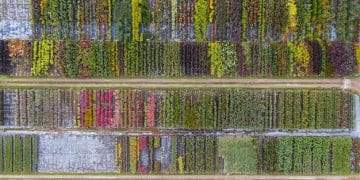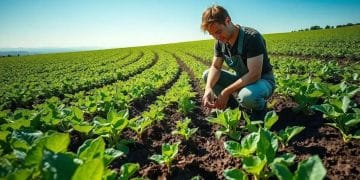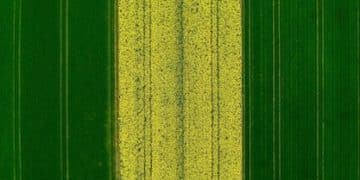Cover Cropping Strategies: A US Farmer’s Guide to Soil Health
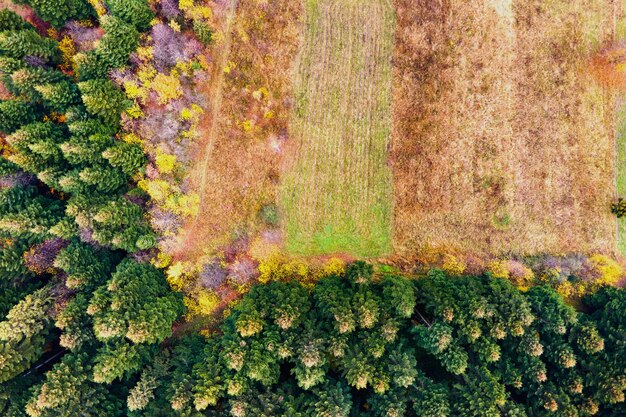
Cover cropping strategies offer US farmers a practical, step-by-step solution to significantly improve soil health within six months by enhancing soil structure, increasing nutrient availability, and suppressing weeds, ultimately leading to more sustainable and productive agricultural practices.
Are you a US farmer looking to boost your soil health in a sustainable way? Cover cropping strategies: A step-by-step guide for US farmers to improve soil health in 6 months offer a practical and effective approach to improve soil quality, increase yields, and promote long-term sustainability on your farm.
Understanding the Basics of Cover Cropping
Cover cropping is more than just planting something after your main crop; it’s a strategic approach to improving soil health, managing nutrients, and suppressing weeds. It involves planting specific crops primarily for the benefit of the soil, rather than for direct harvest.
What Exactly is Cover Cropping?
At its core, cover cropping is about using plants to protect and enhance your soil. These plants can be grasses, legumes, or other species that are sown in between cash crops or during fallow periods.
Benefits of Cover Cropping for Soil Health
The benefits are extensive. Cover crops help prevent soil erosion, improve water infiltration, increase organic matter, and even reduce the need for synthetic fertilizers and herbicides.
- Improve soil structure: Cover crops’ root systems help bind soil particles together, creating better soil aggregation and pore space.
- Enhance nutrient cycling: Legumes, for example, can fix atmospheric nitrogen, making it available to subsequent crops.
- Suppress weeds: Dense cover crop stands can outcompete weeds, reducing weed pressure and the need for herbicides.
- Increase water infiltration: Healthier soil structure leads to better water infiltration and retention, reducing runoff and erosion.
By understanding the foundational principles of cover cropping, farmers can make informed decisions on how to implement these strategies effectively. From selecting the right cover crop species to timing planting and termination, a well-planned cover cropping strategy can significantly enhance soil health and overall farm productivity.
Step 1: Assessing Your Soil and Farm Goals
Before diving into cover cropping, a thorough assessment of your soil’s current condition and your specific farm goals is crucial. This will guide your cover crop selection and management practices.
Conducting a Soil Test
A soil test provides valuable insights into your soil’s nutrient levels, pH, and organic matter content. This information helps you identify deficiencies and tailor your cover cropping strategy accordingly.
Defining Your Farm Goals
What do you hope to achieve with cover cropping? Are you primarily focused on improving soil structure, suppressing weeds, or increasing nutrient availability? Defining your goals will help you choose the right cover crop species and management practices.
- Erosion control: Choose cover crops with extensive root systems, such as cereal rye or oats.
- Weed suppression: Opt for dense, fast-growing cover crops like buckwheat or sorghum-sudangrass.
- Nitrogen fixation: Select legumes like clover, vetch, or peas.
- Improve water infiltration: Use cover crops that create channels in the soil, like tillage radish or daikon.
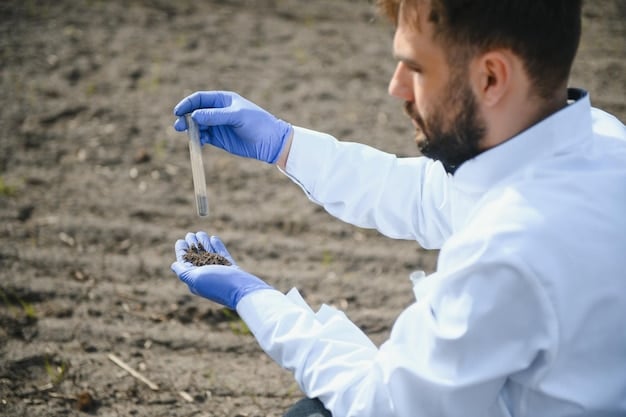
Assessing your soil and defining your farm goals sets the stage for a successful cover cropping program. It ensures that your efforts are targeted and effective, maximizing the benefits for your soil and your farm’s long-term sustainability. Farmers in Iowa, for example, have reported significant improvements in soil health and reduced fertilizer costs by implementing cover cropping strategies tailored to their specific needs.
Step 2: Selecting the Right Cover Crop Species
Choosing the right cover crop species is critical for achieving your soil health and farm management goals. Different cover crops offer different benefits, so careful consideration is necessary.
Common Cover Crop Options for US Farms
There are numerous cover crop species available, each with its unique set of characteristics and benefits. Some popular options include cereal rye, oats, crimson clover, hairy vetch, and tillage radish.
Growing cover crops on your farm is a great way to improve soil health. Choosing the best cover crop for your soils will lead to better results.
Matching Crop to Goal
Consider your primary objective. For nitrogen fixation, legumes like clover and vetch are excellent choices. For erosion control, grasses like cereal rye and oats are often preferred. Tillage radish is effective for breaking up soil compaction.
Here are some great choices for cover crops:
- Cereal Rye: Excellent for erosion control and weed suppression; winter-hardy and adaptable.
- Oats: Quick-growing and effective for suppressing weeds; good for scavenging nutrients.
- Crimson Clover: A legume that fixes nitrogen and attracts beneficial insects; visually appealing.
- Hairy Vetch: Another legume that fixes nitrogen and improves soil structure; winter-hardy.
The selection of cover crops should align with your specific soil needs and farm goals. By carefully matching cover crop species to your objectives, you can maximize the benefits for your soil and overall farm productivity.
Step 3: Planning Your Planting and Termination Strategies
A successful cover cropping strategy requires careful planning of both planting and termination methods. The timing and techniques you choose can significantly impact the success of your cover crop and its benefits to your soil.
When to Plant Cover Crops
The timing of planting depends on your location, climate, and cropping system. In many regions, cover crops are planted after the main cash crop harvest in the fall.
Termination Methods
Cover crop termination is the process of killing or suppressing the cover crop before planting the next cash crop. Common methods include mowing, herbicide application, and tillage.
- Mowing: Effective for terminating some cover crops, especially grasses and legumes.
- Herbicide Application: A common method for terminating cover crops, but consider the environmental impact and potential for herbicide resistance.
- Tillage: A traditional method for terminating cover crops, but it can have negative impacts on soil structure and organic matter.
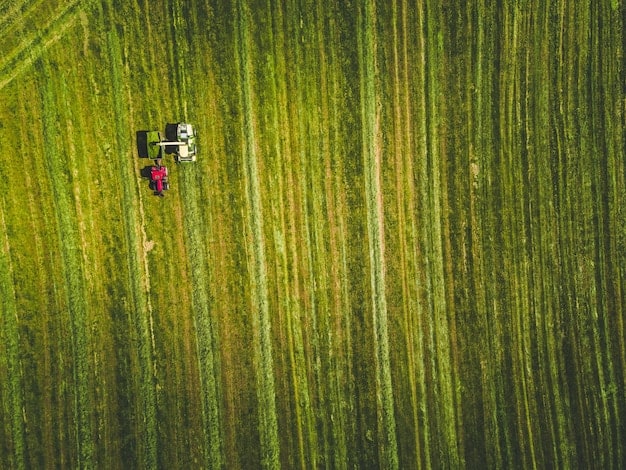
Careful planning of planting and termination strategies is essential for a successful cover cropping program. By considering factors such as timing, methods, and potential impacts, you can optimize the benefits of cover cropping for your soil and your farm.
Step 4: Monitoring and Adjusting Your Approach
Cover cropping is not a one-size-fits-all solution. It’s important to monitor your cover crops’ performance and adjust your approach as needed. Regular observation and data collection will help you fine-tune your strategies.
Regular Field Monitoring
Regularly inspect your cover crop stands to assess their growth, density, and overall health. Look for signs of nutrient deficiencies, pest infestations, or disease.
Data Collection and Analysis
Collect data on cover crop biomass, weed suppression, and soil health parameters. Analyze this data to assess the effectiveness of your cover cropping strategies and identify areas for improvement.
- Assess cover crop biomass: Track the amount of organic matter produced by your cover crops.
- Monitor weed suppression: Evaluate the effectiveness of your cover crops in reducing weed pressure.
- Measure soil health parameters: Track changes in soil organic matter, nutrient levels, and water infiltration.
Take some time each week to walk the fields and check progress; doing this will drastically impact your crops. Monitoring cover crops also allows the farmers to identify early if any problems may be occuring.
By actively monitoring and adjusting your cover cropping approach, you can optimize its benefits for your soil and your farm. This iterative process ensures that your cover cropping strategies remain effective and aligned with your evolving goals.
Step 5: Integrating Cover Cropping into Your Farming System
For cover cropping to be truly successful, it must be integrated seamlessly into your overall farming system. This involves considering how cover crops interact with your cash crops, tillage practices, and other management strategies.
Crop Rotation Strategies
Incorporate cover crops into your crop rotation to maximize their benefits. Consider planting cover crops after cash crops that leave the soil bare or depleted.
Minimizing Tillage
Tillage can disrupt soil structure and reduce organic matter. Explore no-till or reduced-tillage systems to complement your cover cropping efforts.
- No-till farming: Planting cash crops directly into the residue of terminated cover crops.
- Reduced-tillage farming: Minimizing soil disturbance to preserve soil structure and organic matter.
- Combining cover cropping and reduced tillage: A powerful combination for improving soil health and reducing erosion.
Integrating cover cropping into your farming system requires careful consideration of how it interacts with other management practices. By adopting a holistic approach, you can maximize the benefits of cover cropping for your soil and your farm’s long-term sustainability. Farmers across the US are increasingly recognizing the value of integrating cover crops into their broader farming systems, leading to improved soil health, reduced input costs, and enhanced resilience to climate change.
Step 6: Documenting Results for Future Reference
Keeping a detailed record of your cover cropping practices, challenges, and successes allows to see whether the program is doing the farm any good.
Importance of Record Keeping
Thorough documentation is key to refining your strategies over time. Document your crop selection, planting dates, termination methods, any issues that may come up and subsequent yield data.
What to Include in Your Records
Aside from data, consider a log of observations made. Note changes in soil structure, water retention, or pest populations. Photographs can also be very useful in tracking progress, keep them organized!
- Specific cover crop species planted, planting dates, and seeding rates.
- Fertilizer methods, tillage as well as herbicide use.
- How cash crops paired with your cover crops perform: notes on growth, yield and general health.
The key takeaway, Documenting the results of your cover cropping is extremely important for better reference in future, and getting better harvests.
| Key Point | Brief Description |
|---|---|
| 🌱 Soil Assessment | Test soil to understand nutrient levels and pH before planting. |
| 🌾 Crop Selection | Choose species that match farm goals (e.g., legumes for nitrogen). |
| 📅 Planting & Termination | Time planting and select termination method based on local climate. |
| 📊 Monitoring & Adjustments | Regularly monitor cover crops and adjust the approach as needed. |
Frequently Asked Questions
▼
The ideal planting time varies by region and crop. Generally, planting after the fall harvest is common, allowing cover crops to establish before winter. Consult local extension services for optimal timing.
▼
Consider your soil type, climate, and farm goals. Legumes are great for nitrogen, grasses for erosion control, and tillage radish for compaction. Blends can offer multiple benefits.
▼
Common methods include mowing, herbicide application, and tillage. No-till farming involves planting directly into terminated cover crop residue. Choose a method that suits your farm’s practices.
▼
Regular monitoring is key. Inspect your fields weekly to assess growth, density, and overall health. Look for nutrient deficiencies, pests, or diseases to adjust your approach accordingly.
▼
Yes, cover crops can significantly improve soil health by preventing erosion, improving water infiltration, increasing organic matter, and suppressing weeds. These improvements lead to more sustainable farming practices.
Conclusion
By implementing these cover cropping strategies, US farmers can make significant strides in improving soil health within six months. From assessing soil needs to selecting the right species and integrating cover crops into their farming systems, these steps provide a practical pathway toward sustainable agriculture and long-term productivity.
